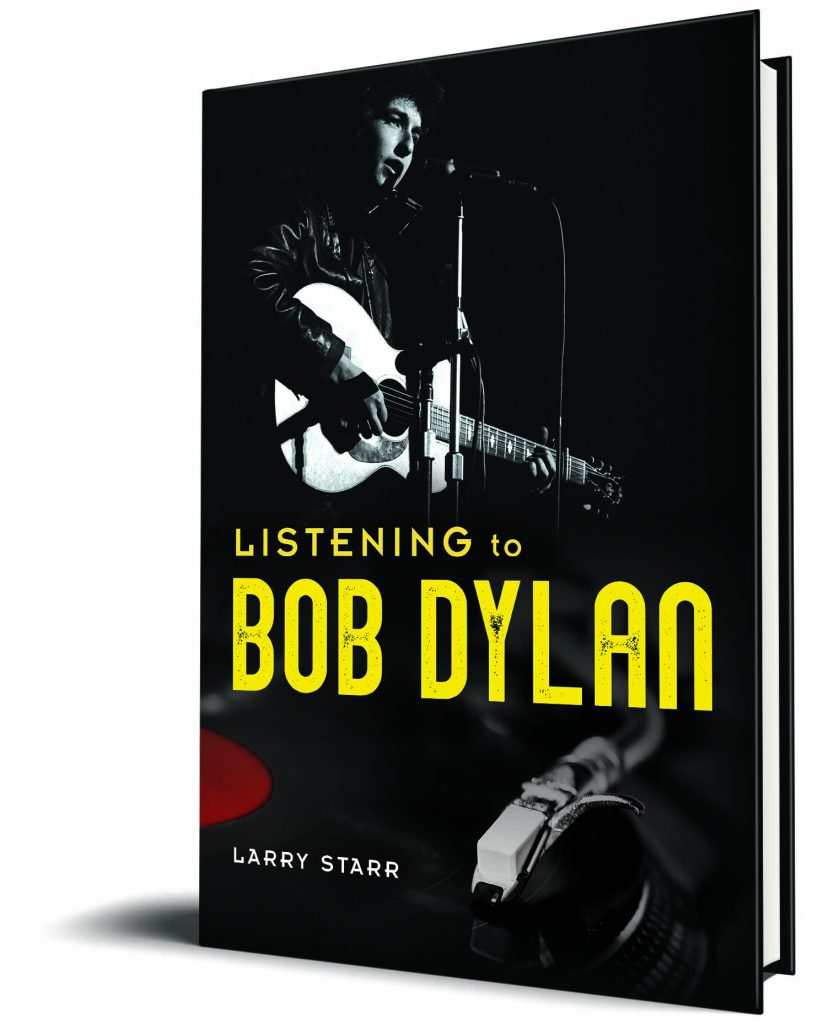Larry Starr, author of Listening to Bob Dylan, answers questions on his scholarly influences, discoveries, and reader takeaways from his book.
Q: Why did you decide to write this book?
I have listened to Bob Dylan since my late teenage years (the mid-1960s), always with intense interest and most often with great enthusiasm. It is because of Dylan’s recordings and live performances that people have come to know, appreciate, and love his work. Yet the enormous literature that exists on Dylan and his songs tends to neglect this fundamental listening experience. Bob Dylan is not simply a great writer of lyrics, or a major cultural influence; he is a performing musician. I wrote my book in the hope of restoring Dylan’s music and performances to the central, essential position they occupy in his output and achievement. The book does not at all neglect the lyrics. Rather, it considers the lyrics as one part of a remarkable whole that is experienced by listening to Dylan’s work.
Q: Who were your biggest influences?
Bob Dylan himself, obviously. And my parents, who encouraged me from earliest childhood to listen attentively to music of all kinds, and who helped me develop an interest in the widest variety of music. Finally, and essentially, the many, many students I had the privilege of teaching during a decades-long career as a music professor, who constantly surprised and educated me by pointing out fresh ways of listening to music—including music that I previously had thought I knew thoroughly (like that of Bob Dylan).
Q: What is the most interesting discovery you made while researching and writing your book?
Among many new discoveries regarding the artistry and intricacies of music in Dylan songs I thought I knew thoroughly, probably the single most intriguing discovery overall involved how significant and expressive Dylan’s use of the harmonica was in his performances. It is his second “voice”—like his singing voice, a remarkably versatile instrument—that also plays a role in articulating the form of many of his songs. The book devotes an entire chapter to Dylan’s harmonica playing.
Q: What myths do you hope your book will dispel or what do you hope your book will help readers unlearn?
I hope to dispel: the myth that Dylan’s music is secondary or unimportant; the myth that Dylan is not a good singer; most of all, the myth that the significance of Dylan’s songs—or anybody’s songs, for that matter—can be reduced to just the lyrics.
Q: What is the most important idea you hope readers will take away from your book?
That the listening experience, in its totality, is essential to understanding the work of any performing musician, and that this listening experience is open to everybody willing to devote attention to it, regardless of musical background.
Q: What do you like to read/watch/or listen to for fun?
A great joy is returning to old popular records that I loved in younger days and discovering not only that I can still enjoy them in my senior years, but that I am still finding new musical aspects to appreciate in them.

